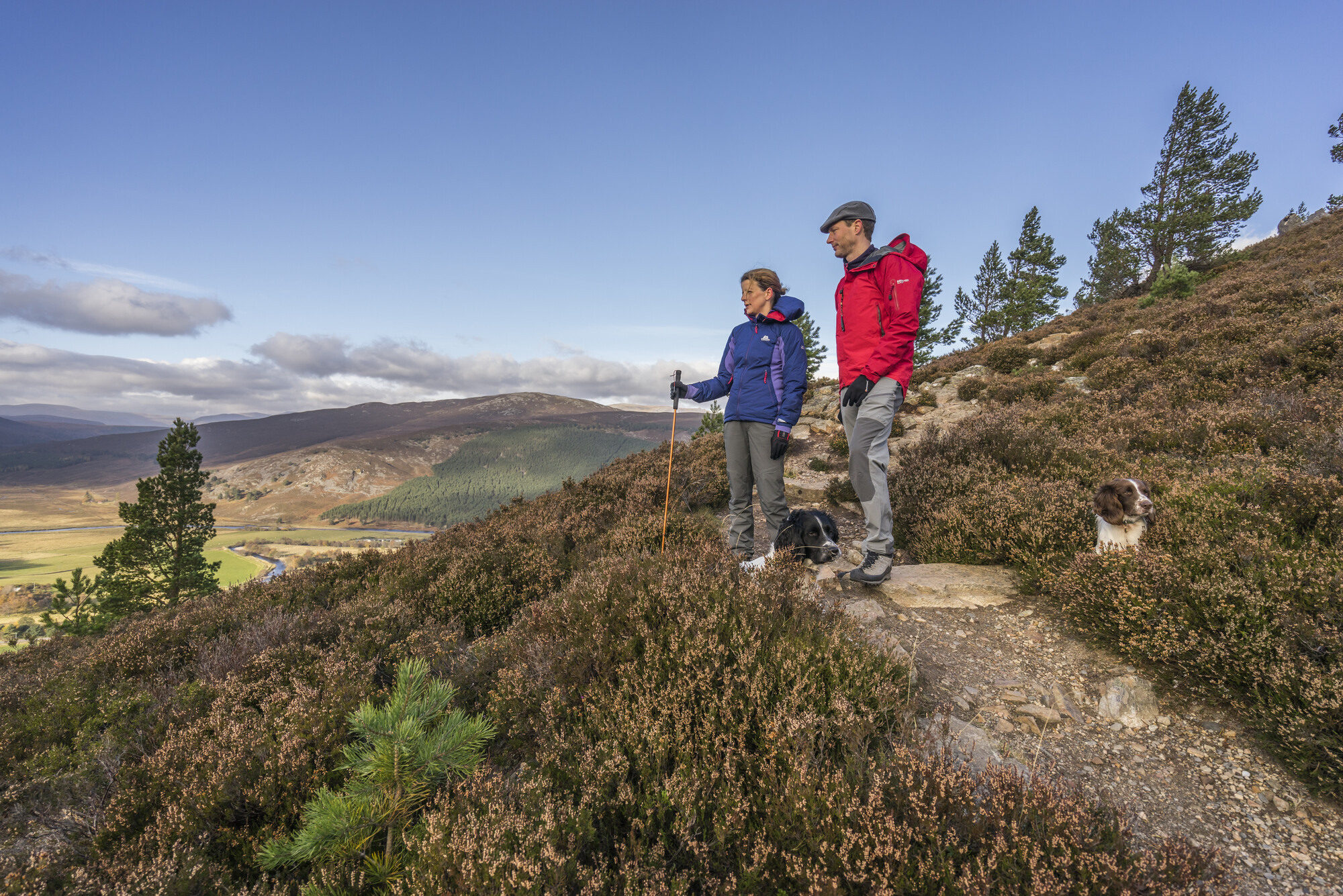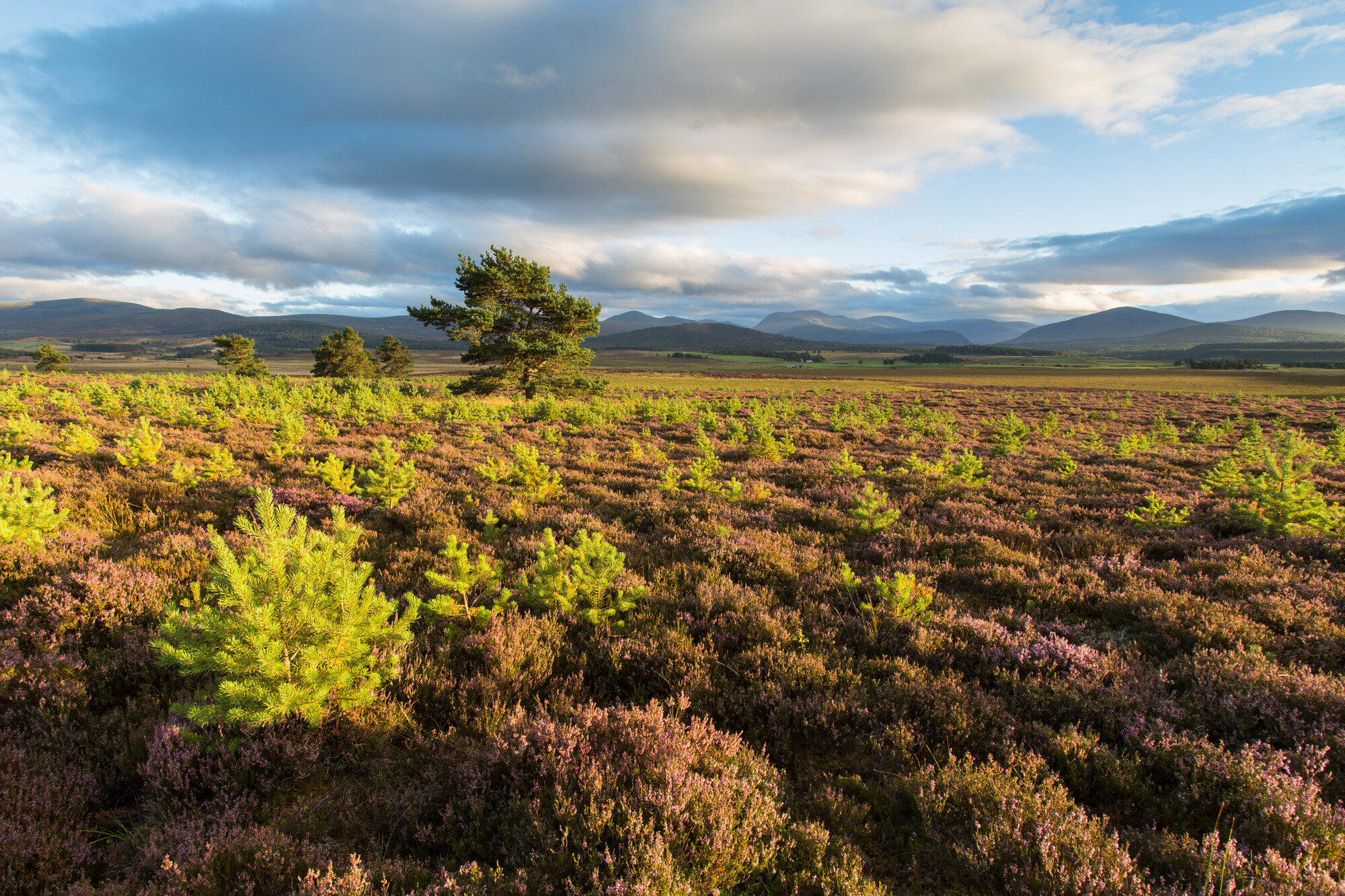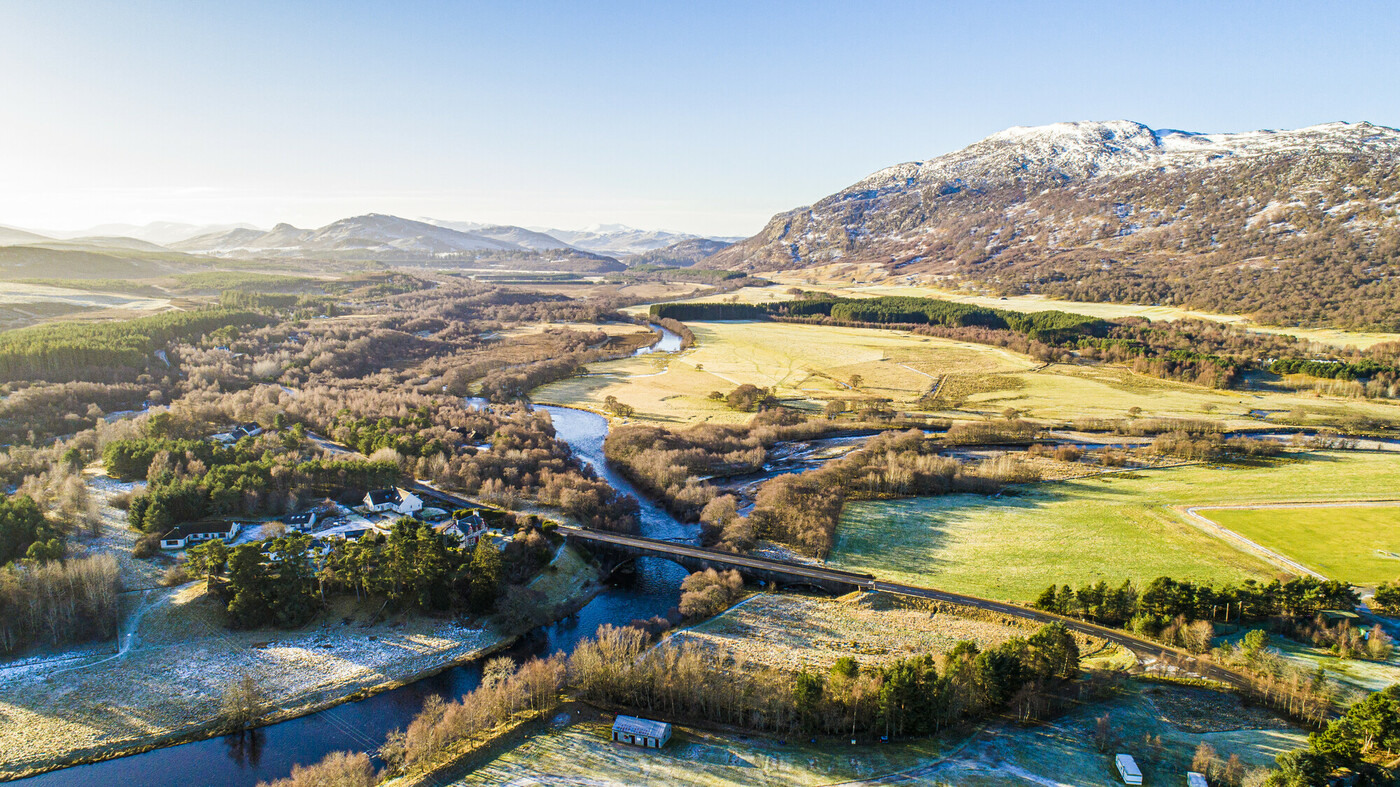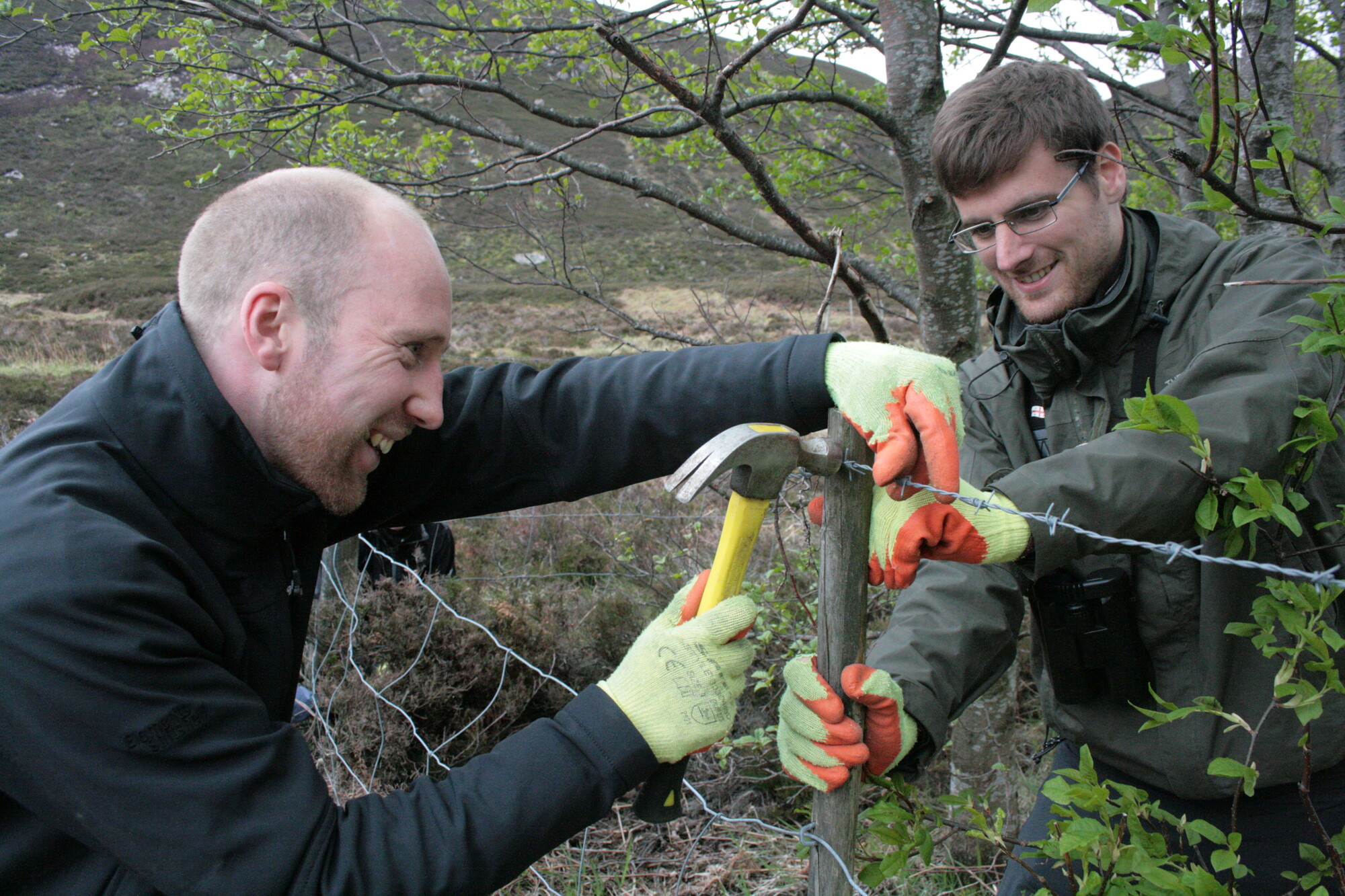Formal board meeting - paper 3 - Partnership Plan annual update - 26 September 2025
Cairngorms National Park Authority Ughdarras Pàirc Nàiseanta a’ Mhonaidh Ruaidh
Formal Board Paper 3 26 September 2025 Page 1 of 7
For information Title: National Park Partnership Plan annual update Prepared by: Gavin Miles, Director of Planning and Place
Purpose This paper summarises the monitoring framework for the National Park Partnership Plan (NPPP) and identifies some of the key areas where indicators show progress or where officers expect progress to be demonstrated in future after the third year of delivery of the NPPP.
Recommendations The Board is asked to: α) Note the progress summarised in the paper and associated Annex 1.
Strategic context
The NPPP identifies the long term objectives for the National Park that will support the delivery of the three long term outcomes for 2045 under the sections of Nature, People and Place. Each long-term objective has an indicator identified to help assess progress to the long-term objectives and outcomes. This paper summarises the data available for the indicators for 2024⁄25, the third year of delivery of the current NPPP and identifies the areas of significant progress or of significant challenge and any changes in delivery to address issues.
The indicators are made up of a range of data, some of which is collected annually or more frequently, some of which is only reviewed every few years, and some of which requires new work to identify in future. They are intended to be most effective over the full life of the NPPP and in showing progress or identifying problems towards the outcomes for 2045. Some are effective indicators at this early point in the delivery of the Partnership Plan. Others require more time to be effective so can be supplemented with other data or examples of work.
The National Lottery Heritage Fund (NLHF) project Cairngorms 2030 (C2030) is now established an delivering across its range of projects, so some of the progress
Cairngorms National Park Authority Ughdarras Pàirc Nàiseanta a’ Mhonaidh Ruaidh
Formal Board Paper 3 26 September 2025 Page 2 of 7
reported here now reflects that increasing contribution of the project to the National Park. The C2030 programme is reported regularly to the Park Authority Performance Committee.
Strategic policy consideration
- Delivery of the NPPP is at the core of the Board’s role and this annual update provides a strategic overview of the monitoring framework of the entire Partnership Plan. It supplements and should be read in the context of other reports on work given through the regular Chief Executive Officer (CEO) updates to Board, other board papers and reports to the Performance Committee, and the updates and information shared at board business sessions throughout the year.
Implications
- This year’s report uses a Red, Amber, Green (RAG) rating and directional assessment to provide a more nuanced summary against Partnership Plan objectives, with the narrative providing a summary of the evidence, rationale for the assessment and any significant changes in work identified to address issues. The sections below are intended to pick out some of the key highlights from the year but has a greater focus on the objectives that are currently considered at an amber or red state, either because of the practical challenges faced in delivering change, or because work we expect to deliver change in future cannot yet be evidenced to have done so. This is intended to inform and to reassure board members and be considered in the context of that many objectives, targets and indicators are for periods beyond the five-year Partnership Plan timescale.
Summary of progress by 2024⁄25
- The following three sections summarise progress under the Nature, People and Place themes of the NPPP. Annex 1 to the paper provides a summary of progress and RAG ratings to the end of 2024⁄25.
Nature
- The long-term outcome for People is a carbon negative and biodiversity rich National Park with better functioning, better connected and more resilient ecosystems.
Cairngorms National Park Authority Ughdarras Pàirc Nàiseanta a’ Mhonaidh Ruaidh
Formal Board Paper 3 26 September 2025 Page 3 of 7
Of the 14 objectives under the Nature theme, eight are considered to be green, with highlights including: the above target delivery of 2181 Hectares (Ha) of peatland restoration; securing £1.2 million of inward investment towards Cairngorms Nature species conservation; the development of the Integrated Wildfire Management Plan for the National Park; and the delivery of projects supported via the National Park Authority’s Climate Adaptation Fund.
Six of the 14 objectives are considered to be amber, though the work on each is progressing steadily and none are considered to be exceptions requiring any changes of direction in work: α) A4. Deer and herbivore impacts. The objective is about reducing deer and herbivore impacts on ecological restoration targets, and the indicator relates to average open range deer densities in the five Deer Management Group (DMG) areas of the National Park. Two of those groups have deer densities within the target range and another group is close and approaching it while and two groups have densities that remain significantly above it but with work identified to reduce them. b) A5. Moorland management. The objective is about increasing the sustainability of moorland management in the National Park to ensure greater species and structural diversity in moorland areas of the National Park. While there are national changes in the regulation of moorland management that will help this objective, accurate data on species and habitat diversity will only become available as the Cairngorms Nature Index is developed. c) A6. Gamebird management. The objective is about ensuring that all pheasant and partridge shoots adhere to best practice and that all gamebird releases are sustainable and do not negatively impact on native biodiversity. Work by Game and Wildlife Conservation Trust (GWCT) has established a baseline of the numbers of gamebirds being released in the National Park and work will now focus on the impacts of releases on native biodiversity. d) A12. Cairngorms Nature Index. The Cairngorms Nature Index will provide a scientifically robust way of assessing the health of ecosystems in the National Park. Progress to develop the index has been slower than expected due to complexity of data and availability of expert staff, with completion now expected during 2026. e) A13. Species Recovery. The objective is about ensuring priority species thrive and is linked to species recovery curves as part of Cairngorms Nature. The
Cairngorms National Park Authority Ughdarras Pàirc Nàiseanta a’ Mhonaidh Ruaidh
Formal Board Paper 3 26 September 2025 Page 4 of 7
f) People final report on the Cairngorms Nature Action Plan established a baseline and the next Cairngorms Nature Action Plan will establish new targets for species recovery curves. A14. Green Investment. The objective is about increase private green finance in nature recovery projects and the while there is anecdotal evidence that investing is increasing, as well as work to incentivise it, the indicator is based on data on Peatland Code and Woodland Code projects registered, which is not yet available at the National Park scale.
The long-term outcome for People is a wellbeing economy that works for all the people of the Cairngorms.
Of the 11 objectives under the People theme, eight are considered to be green. The highlights of the year are: the implementation of the Green Health referral system in all the GP practices of Badenoch and Strathspey (a C2030 project lead by NHS Highland); the continued support for communities via the Cairngorms Trust and Scottish Government Community Led Local Development (CLLD) funding, as well as the successful development by numerous communities across the National Park of projects that help them; and the continued successful recruitment and training of volunteer rangers, creating a significant additional resource to support visitor management and activities of partners on the ground.
The theme also has the only objective across all of the NPPP that is considered be red. That objective is: α) B1. Working-age population, which aims to maintain the proportion of young and working-aged people in the population. This is probably one of the most challenging objectives within the NPPP as it attempts to change a national and rural trend that is influenced by many factors outside the influence of the partners who deliver the Plan, including longer life expectancy and national migration trends. It has been assessed as red because the most recent census results show both a reduction in number and proportion of young and working-aged people. However, for context, members should remember that over the long term, the National Park has consistently retained a larger proportion of young and working-aged people than comparable areas of Scotland. The work to increase supply of affordable and mid-market housing,
Cairngorms National Park Authority Ughdarras Pàirc Nàiseanta a’ Mhonaidh Ruaidh
Formal Board Paper 3 26 September 2025 Page 5 of 7
support a resilient economy and ensure fair pay helps to support this objective.
- Two of the 11 objectives are considered to be amber but for different reasons: α) B4. Skills and training. The objective is about increasing skills and training opportunities for people in the National Park and ensuring that green jobs can be filled by residents and under-represented groups. Anecdotally, we know that the National Park area supports many green jobs and that some new models for the management of land can support as many jobs, including using the skills of traditional employees. One of the highlight elements of work from partners also happened in September 2024, with the Your Future Here event at the MacDonald Aviemore resort demonstrating the value of National Park – focussed events work for both employers and young people or others who want to develop their careers here. Nevertheless, the data sources we wanted to use to help demonstrate progress are not available or suitable, so we are looking at a range of other data to show progress. b) B10. A Park for All. The objective is about ensuring there are better opportunities for a diverse range of people to enjoy the National Park and that the visitor profile will be more diverse. Partners are supporting numerous projects that encourage people from different backgrounds to visit and to enjoy the National Park. However, the indicator that we have chosen to support the objective links the percentage of black and global majority group visitors to the National Park to the Scottish population. The most recent data available at the time of writing shows a significant increase in the proportion of those visitors though still short of the target.
Place
The long-term outcome for Place is a place that people want to live in, work in and visit that works for all.
Of the ten objectives under the Place theme, four are considered green and six are considered amber. The highlights of year span both green and amber objectives, with the continued delivery of affordable and mid-market housing in Badenoch and Strathspey via Highland Council’s Strategic Housing Investment Plan, the establishment of a 20-minute neighbourhood tool as part of the Local Development Plan (LDP), progress in active travel and public transport projects as
Cairngorms National Park Authority Ughdarras Pàirc Nàiseanta a’ Mhonaidh Ruaidh
Formal Board Paper 3 26 September 2025 Page 6 of 7
part of C2030, continued improvement to paths across the National Park, and completion of the National Park Visitor Survey showing continued high visitor satisfaction levels.
- The six objectives that are amber can be summarised as: α) C1. Access to housing. The objective is about ensuring, there is sufficient affordable housing stock to enable people to live and work within the National Park, with a target of only 15% of housing stock being second homes, vacant or short-term lets by 2040. While there are a number of tax, Council Tax and short term let licencing measures that may have increased the availability of some property for sale on the open market, the percentage of homes in those categories overall has changed little. b) C2. New Housing. The objective is about as much new affordable and mid- market housing as possible being delivered and reaching a target of 75% of new housing being affordable by 2030. Significant progress is being made in Badenoch and Strathspey where delivery of affordable and mid-market housing in Badenoch and Strathspey via Highland Council’s Strategic Housing Investment Plan is sustaining historically high rates, but demand remains high, and delivery will not yet meet the 75% target. c) C3. Housing and community benefit. The objective aims to secure the control of housing land with communities and public bodies in order to deliver long term needs of the communities. The objective is considered to be amber because only a very small percentage is under the control of communities or public bodies. d) C4. Villages and town centres. The objective is to ensure villages and town centres in the National Park are thriving places where people live, shop and meet and its indicator is red to 20-minute neighbourhoods and the number of properties that fall inside appropriate categories of easy access to services. The objective is considered amber because while there is now a tool available to establish a baseline and some projects through C2030 that may increase accessibility, the delivery of those projects will happen in the future. e) C7. Transport to and around the National Park. The objective promotes a modal shift towards sustainable and active travel in the way visitors and commuters get to, and everyone moves around, the National Park. The target is simply to increase active travel and public transport use within the National Park and is considered amber because while there are a number of projects to
Cairngorms National Park Authority Ughdarras Pàirc Nàiseanta a’ Mhonaidh Ruaidh
Formal Board Paper 3 26 September 2025 Page 7 of 7
f) improve infrastructure, and change behaviours, as well as some early indications of change, these are all long-term projects where the significant changes in people’s behaviour are expected in future years. C10. Cultural heritage. The objective is to safeguard and promote the National Park’s cultural heritage and provide opportunities for everyone to experience and learn about the National Park’s outstanding historic environment, history and culture. The indicator is the number of community- led heritage projects in the National Park and also has a target of establishing a cultural heritage network. A cultural heritage network is being developed by a panel of volunteers to ensure it meets the needs of communities and a grant funding mechanism for projects is being developed to support groups in future, but the impacts of both are yet to seen or evaluated so the objective is considered amber at this point in time.
Next steps
- All partners will continue to deliver their work and coordinate their work through the relevant partnerships or operational structures they have in place to support it. Monitoring of the plan and collation of data to assess progress will continue as part of that. The NPPP microsite will continue to build further content and use the monitoring data within this paper to bring stories to life for different audiences.
Gavin Miles Gavinmiles@cairngorms.co.uk 05 September 2025




